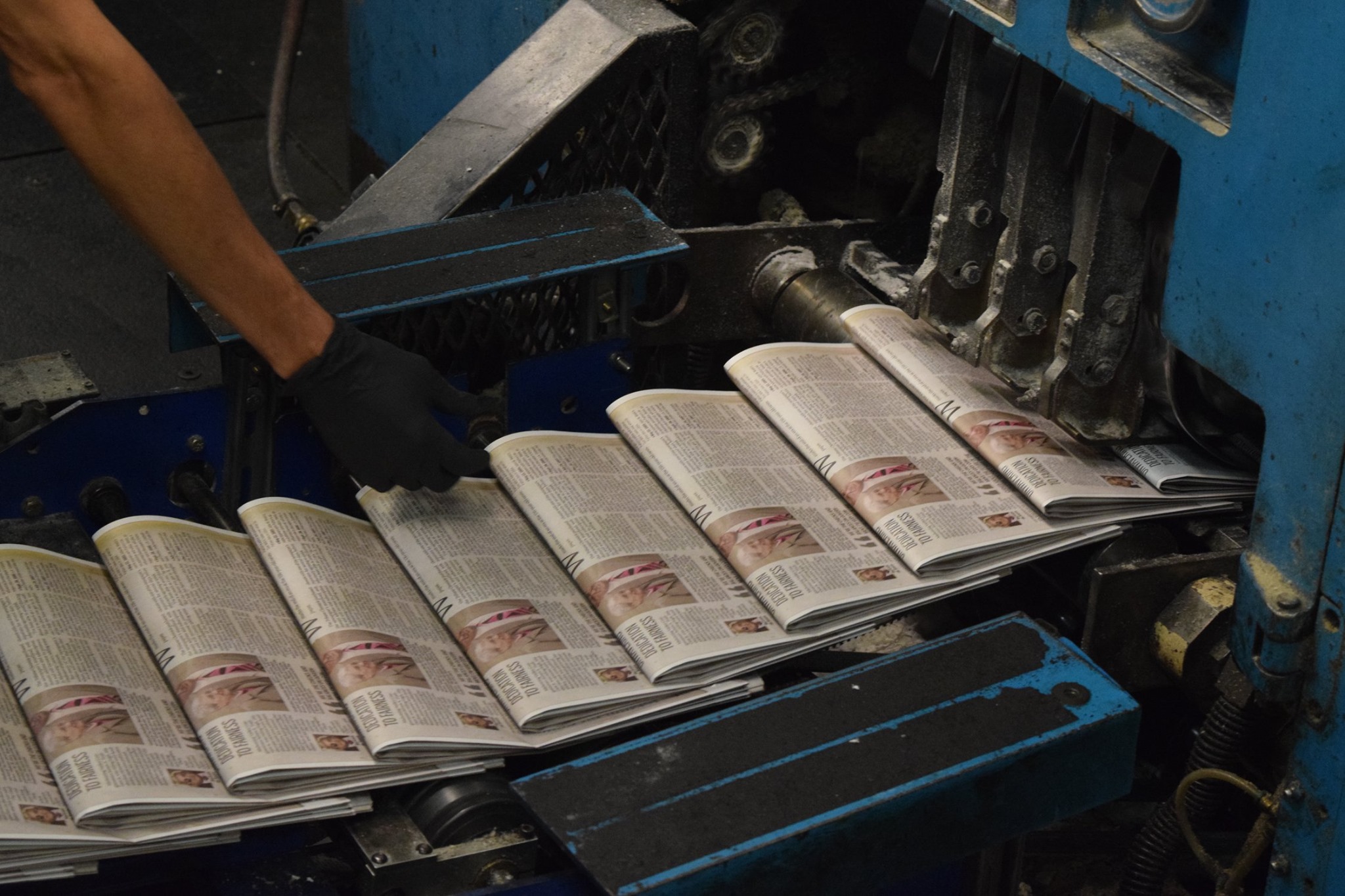By J. Harvard Feldhouse
The recent closing of Youngstown’s only daily newspaper, The Vindicator, marks the end of an era for storytelling in the Mahoning Valley.
To many, The Vindicator’s closure represents the potential downward direction that journalism is headed in and the consequences news organizations suffer when they fail to adapt.
About 20% of the nation’s newspapers have either gone out of business or merged in a little more than a decade, according to Tim Franklin, senior associate dean of the Medill School of Journalism and director of the Medill Local News Initiative at Northwestern University in Chicago.
“The old business model has completely collapsed,” Franklin said.
But many pose this question: Why is the industry falling short?
According to Franklin, approximately two-thirds of advertising revenue at newspapers has “vaporized” in the past decade, when that revenue constituted about 80% of income for a majority of news organizations.
“When you lose two-thirds of your primary revenue source, you’re going to have problems,” Franklin said.
With advancements in technology, the news industry had to adapt to fit consumers’ needs.
When news media first appeared on the internet, news organizations used the same advertisement revenue model they used for print. But now, online ads don’t pay.
“Google and Facebook are sponging up, by some estimates, 70% of all new digital advertising revenue, so there’s not much left on the table for local news organizations as a result,” Franklin said.
Mark Brown, former general manager of The Vindicator, also named Google and Facebook as contributors to the loss of ad revenue in a Business Journal article from June.
Brown said The Vindicator lost revenue in 20 years out of the last 22 years.
“I must say that it really took us by surprise that it would shut down the way it did,” Dan O’Brien, associate editor of The Business Journal, said. “I think everyone had suspected that either they would eventually sell the publication or … trim down the delivery and publication of the newspaper to maybe two, three days a week or something of that nature and the rest of it migrating to an online edition.”
Brown tried to sell the paper, subcontract work and draw in printing business with a new press, but it wasn’t enough. The digital disruption in the news business forced The Vindicator to fold.
Many organizations in the industry, like the Medill Local News Initiative that Franklin directs, are researching sustainable news models to deal with the digital disruption.
These range from organizations selling shares to community members, co-ops, subscriptions and donations.
“More and more news organizations are putting up paywalls or metered paywalls and are realizing that they’re going to need revenue from their readers to support the journalism that’s happening in their communities,” Franklin said.
Some local news organizations and online-only news websites are aiming to fill The Vindicator’s void.
Four local initiatives have already adopted or are working toward sustainable news models in the area.
The Tribune Chronicle bought The Vindicator masthead, subscriber list and URL and printed a Mahoning County edition called The Vindicator.
The Tribune still follows what is considered a “traditional” print news model: They sell print subscriptions and advertise online.
WFMJ, WKBN and other local news broadcast stations do not solely rely on advertisement revenue like print publications do.
According to Jack Grdic, general manager of WFMJ and WBCB, the broadcast TV ecosystem is completely different than print.
“We work in terms of our over-the-air viewership but also through our distributors,” he said. “When our product is carried, repackaged and sold through cable companies … we are compensated for that. We receive a per-subscriber fee.”
The Business Journal expanded its investigative and arts and entertainment coverage because of The Vindicator. Advertisements, sponsorships and print subscribers keep The Business Journal running because they’re a small, niche publication.
“We have essentially two products: We have our print edition, which comes out twice a month, and our online edition, which is daily,” O’Brien said. “We don’t have the overhead of a large printing press to take care of — we outsource printing capabilities here. As a result of that, we have worked diligently to both maintain our costs and build advertising revenue with new customers.”
The Business Journal also formed a partnership with ProPublica to receive grant money that will fund its new investigative reporting endeavors.
Additionally, a new online-only news organization by McClatchy, The Compass Experiment, will launch in Youngstown soon. Mandy Jenkins, general manager of The Compass Experiment, said the goal is to explore different sustainable news revenue models.
“Our first focus is working on digital display advertising and sponsorship,” Jenkins said. “Then we’ll be adding a few more things over time. It’s about getting to know the market and getting to know the area. What are some creative ways that we can be making money, working with local businesses, working with local sponsors and finding local partners?”
The Compass Experiment has intentionally not specified what kind of news it will report in Youngstown because it’s waiting to find out what’s left.
“For us, it’s about figuring out what are the things that aren’t going to be covered once this all happens,” Jenkins said. “What are the things that our really small team can do to make a big difference?”
The future of local news in the digital age will continue to be uncertain, but the will of the remaining local news organizations to tell every story, despite the digital disruption, is certain.
